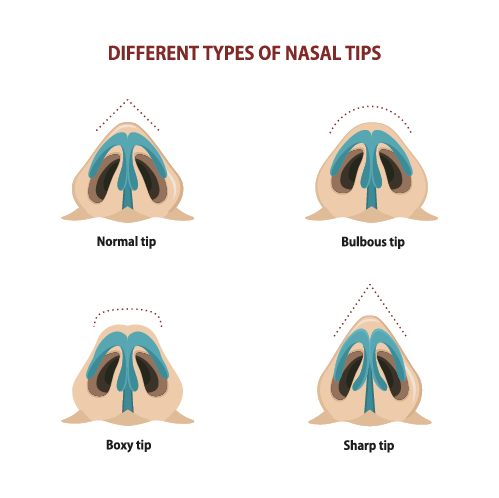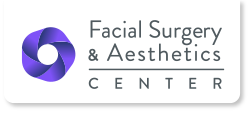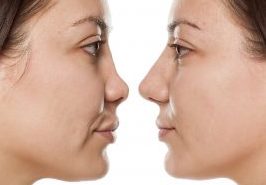
Dr. Menachof, MD, FACS has performed thousands of facial plastic surgery procedures in over 20 years of experience. He has been recognized as a Fellow by multiple academies, named one of America’s Top Facial Plastic Surgeons continually since 2003 and is featured in multiple national publications.
The nose is a very prominent facial feature, and there are various reasons people seek rhinoplasty. Luckily, for those who are born with nasal features that they would like to change, there are surgical treatments that can alter the nose.
What is a bulbous tip rhinoplasty?
Rhinoplasty, also referred to as a nose job, is a form of plastic surgery in which the nose is resized or reshaped. A common reason why patients seek nasal reshaping is due to their rounded, or bulbous, nasal tip. In this case, patients describe their nose as having a round, wide tip without definition.
What Causes a Bulbous Tip?
A bulbous tip can be caused by a combination of things — poorly defined hypertrophic lower lateral cartilages, a round dome shape, heavy soft-tissue coverage or poor cartilage strength. The solution to a bulbous tip is determined by the cause. However, rhinoplasty commonly reshapes the nose to create more of a soft, pointed appearance.
Bulbous Tip Treatment Options
Contemporary rhinoplasty techniques allow the bulbous tip to be refined without compromising nasal structure. Treating the bulbous nasal tip with rhinoplasty involves refining and reconfiguring small cartilage edges, along with suturing techniques to create a sharper yet natural nasal tip. For thicker skinned patients, thinning of the nasal tip skin may be necessary. This practice ensures a stable long-term functional and aesthetic result.
Bulbous Tip Rhinoplasty Recovery
The recovery for bulbous tip rhinoplasty is approximately one and a half to two weeks. During this time, the patient should rest with their head in an elevated position as much as possible. The cast and stitches will be removed a little after a week, and taping will be removed in the following couple of days. The nose will still be swollen, but not noticeable. Swelling will decline as the months pass — three weeks after the procedure, 20-30 percent of the swelling will be down. Six weeks following the procedure, 50-60 percent of swelling will be down. It will take a full year for all of the swelling to subside, 90 percent of it subsiding in the three months following the procedure. The tip usually takes the longest to heal.
The patient can resume the following activities at these times:
- Driving: Five to seven days after surgery
- Non-contact sports (jogging, swimming, hiking, etc.): Three to four weeks after surgery
- Contact sports (tennis, skiing, football, basketball, etc.): Six weeks after surgery
- Diving: Eight to 12 weeks after surgery
After the procedure, the nose will be proportional in size and width, such that the bridge gently blends and transitions into the nasal tip. Typically, this will fit better with the patient’s face and highlight his or her other features.
Seek the counsel of a surgeon with experience in rhinoplasty to determine your nasal issues, and they will help you determine the best course of action. Don’t hesitate to reach out if you have more questions!
This blog was originally posted in September of 2017 and has been reposted in 2020 with updated information.




